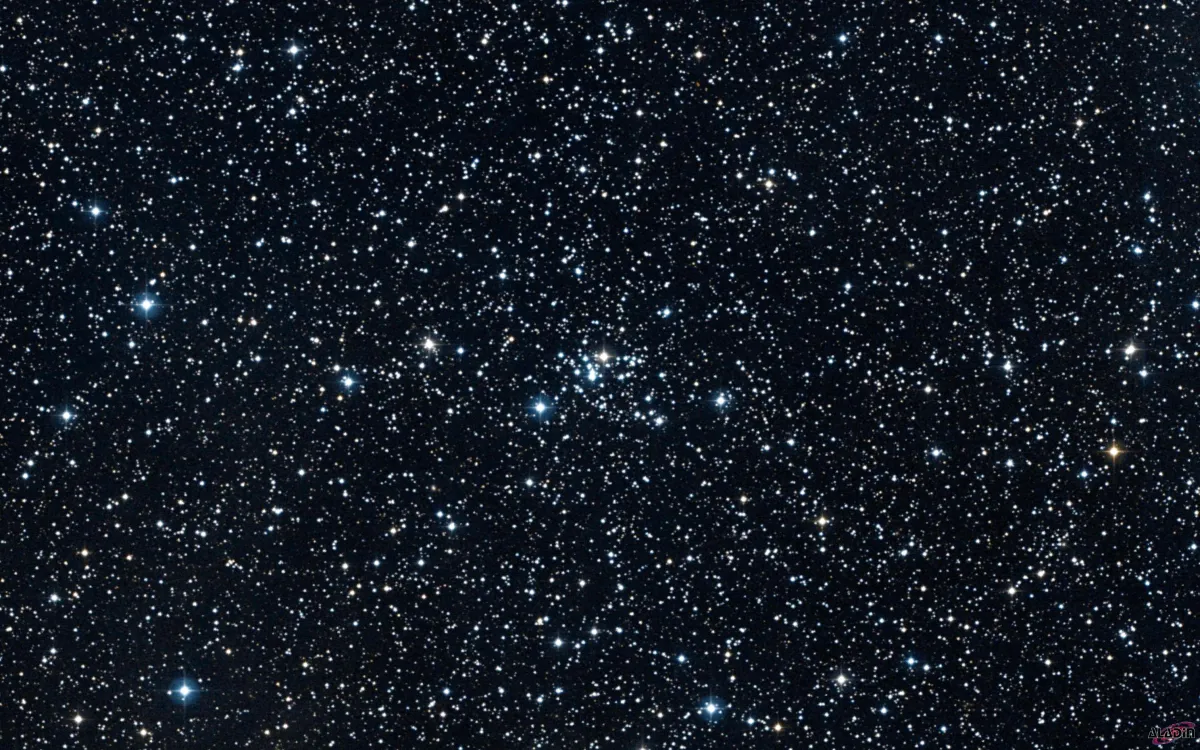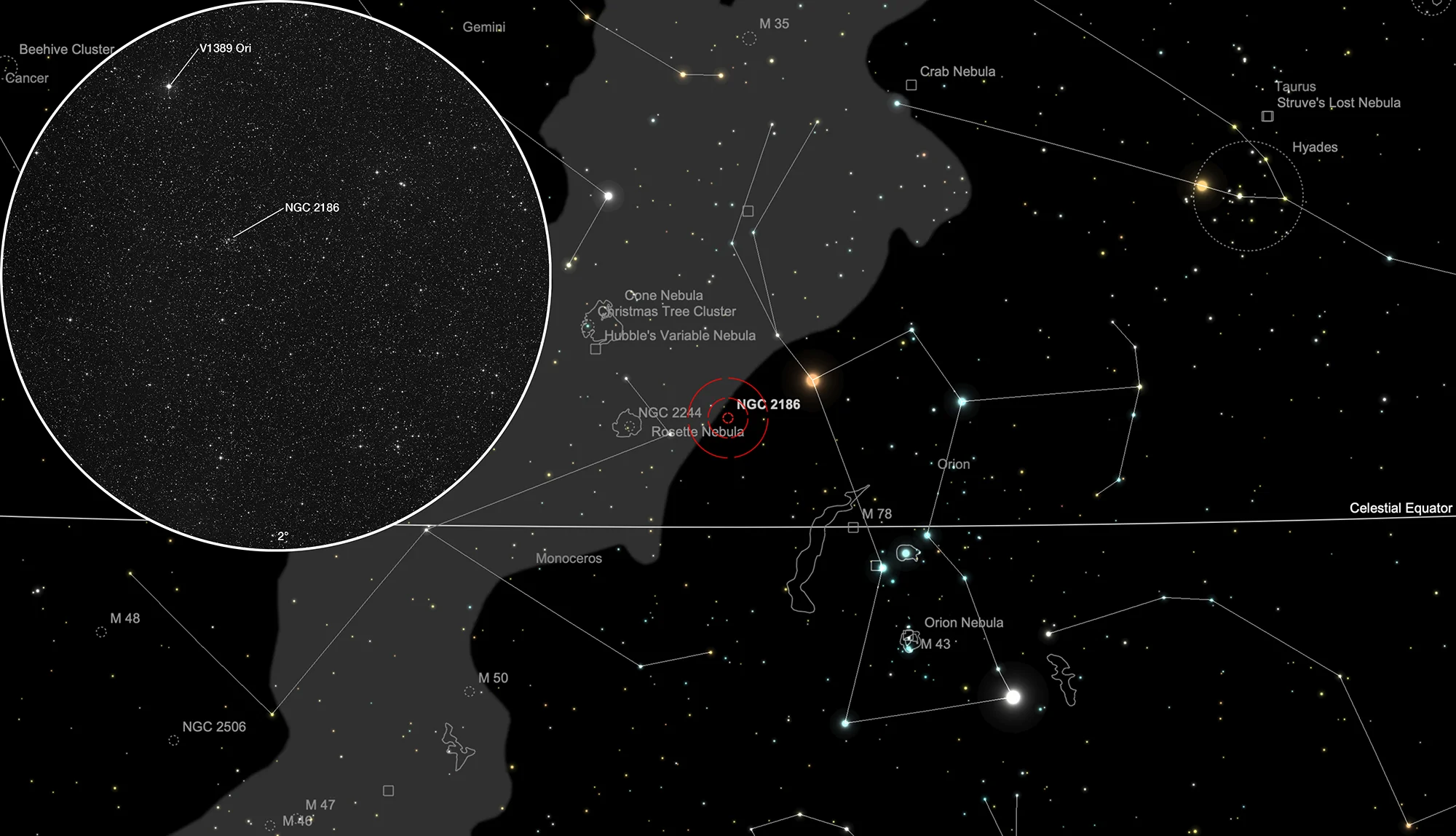Open Cluster NGC 2186

History
This open cluster was discovered on 27 January 1785 by German-British astronomer William Herschel. He used his 18.7-inch speculum reflector of 20 feet focal length in Datchet, near to Windsor Castle. He logged the cluster as VII 25 and noted: «A cluster of pretty compressed stars of several sizes, 4' or 5' diameter wth extensively straggling ones.» [464]
John Herschel listed the cluster as h 384 and observed it once on 2 February 1831 (sweep 320): «A pretty rich, comp cl, one st = 9, 3 or 4 = 11, and many 12...15. Place that of double star h 2288.» [466]
Physical Properties
| Designation | NGC 2186 |
| Type | OCL (II2p) |
| Right Ascension (J2000.0) | 06h 12m 07.1s |
| Declination (J2000.0) | +05° 27' 31" |
| Diameter | 5 arcmin |
| Visual magnitude | 8.7 mag |
| Metric Distance | 1.445 kpc |
| Dreyer Description | Cl, pL, pRi, pC, st L and S |
| Identification, Remarks | WH VII 25; h 384; GC 1376; OCL 498 |
Finder Chart
The open cluster NGC 2186 can be found in the constellation Orion. On 25 December it in opposition with the Sun and is therefore highest in the sky at local midnight.
